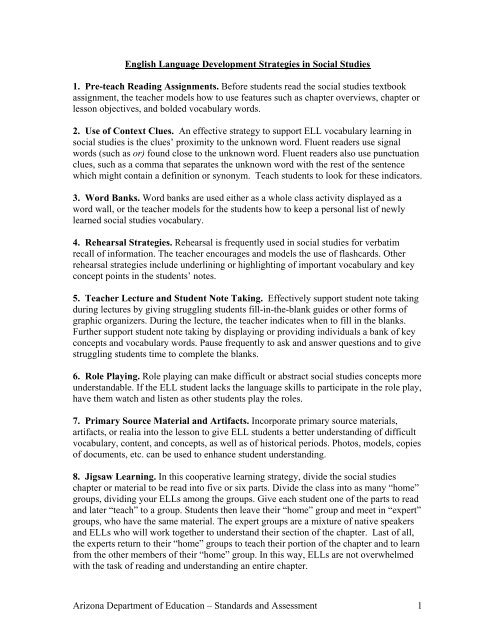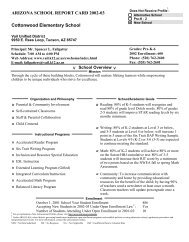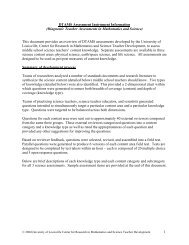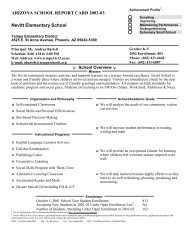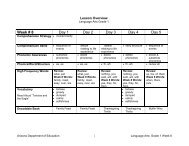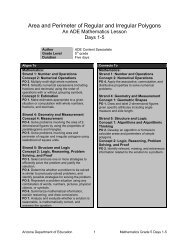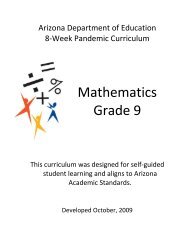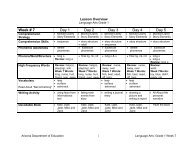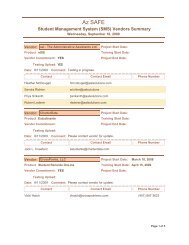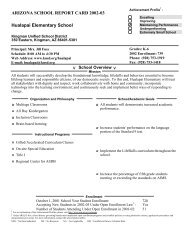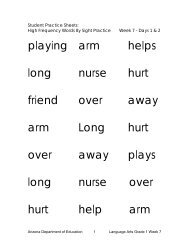English Language Development Strategies for Social Studies Content
English Language Development Strategies for Social Studies Content
English Language Development Strategies for Social Studies Content
Create successful ePaper yourself
Turn your PDF publications into a flip-book with our unique Google optimized e-Paper software.
<strong>English</strong> <strong>Language</strong> <strong>Development</strong> <strong>Strategies</strong> in <strong>Social</strong> <strong>Studies</strong>1. Pre-teach Reading Assignments. Be<strong>for</strong>e students read the social studies textbookassignment, the teacher models how to use features such as chapter overviews, chapter orlesson objectives, and bolded vocabulary words.2. Use of Context Clues. An effective strategy to support ELL vocabulary learning insocial studies is the clues’ proximity to the unknown word. Fluent readers use signalwords (such as or) found close to the unknown word. Fluent readers also use punctuationclues, such as a comma that separates the unknown word with the rest of the sentencewhich might contain a definition or synonym. Teach students to look <strong>for</strong> these indicators.3. Word Banks. Word banks are used either as a whole class activity displayed as aword wall, or the teacher models <strong>for</strong> the students how to keep a personal list of newlylearned social studies vocabulary.4. Rehearsal <strong>Strategies</strong>. Rehearsal is frequently used in social studies <strong>for</strong> verbatimrecall of in<strong>for</strong>mation. The teacher encourages and models the use of flashcards. Otherrehearsal strategies include underlining or highlighting of important vocabulary and keyconcept points in the students’ notes.5. Teacher Lecture and Student Note Taking. Effectively support student note takingduring lectures by giving struggling students fill-in-the-blank guides or other <strong>for</strong>ms ofgraphic organizers. During the lecture, the teacher indicates when to fill in the blanks.Further support student note taking by displaying or providing individuals a bank of keyconcepts and vocabulary words. Pause frequently to ask and answer questions and to givestruggling students time to complete the blanks.6. Role Playing. Role playing can make difficult or abstract social studies concepts moreunderstandable. If the ELL student lacks the language skills to participate in the role play,have them watch and listen as other students play the roles.7. Primary Source Material and Artifacts. Incorporate primary source materials,artifacts, or realia into the lesson to give ELL students a better understanding of difficultvocabulary, content, and concepts, as well as of historical periods. Photos, models, copiesof documents, etc. can be used to enhance student understanding.8. Jigsaw Learning. In this cooperative learning strategy, divide the social studieschapter or material to be read into five or six parts. Divide the class into as many “home”groups, dividing your ELLs among the groups. Give each student one of the parts to readand later “teach” to a group. Students then leave their “home” group and meet in “expert”groups, who have the same material. The expert groups are a mixture of native speakersand ELLs who will work together to understand their section of the chapter. Last of all,the experts return to their “home” groups to teach their portion of the chapter and to learnfrom the other members of their “home” group. In this way, ELLs are not overwhelmedwith the task of reading and understanding an entire chapter.Arizona Department of Education – Standards and Assessment 1
9. Graphic Organizers. The use of graphic organizers helps students categorize thein<strong>for</strong>mation they are learning. Organizers such as Venn diagrams, timelines, flow charts,etc., can lead to the understanding of key concepts and vocabulary.10. Analogies. Using analogies will help students link the familiar with the unfamiliar.Find examples within the classroom, school, and community that lead to studentunderstanding of social studies concepts. It is important to point out similarities as well asdifferences.Arizona Department of Education – Standards and Assessment 2


